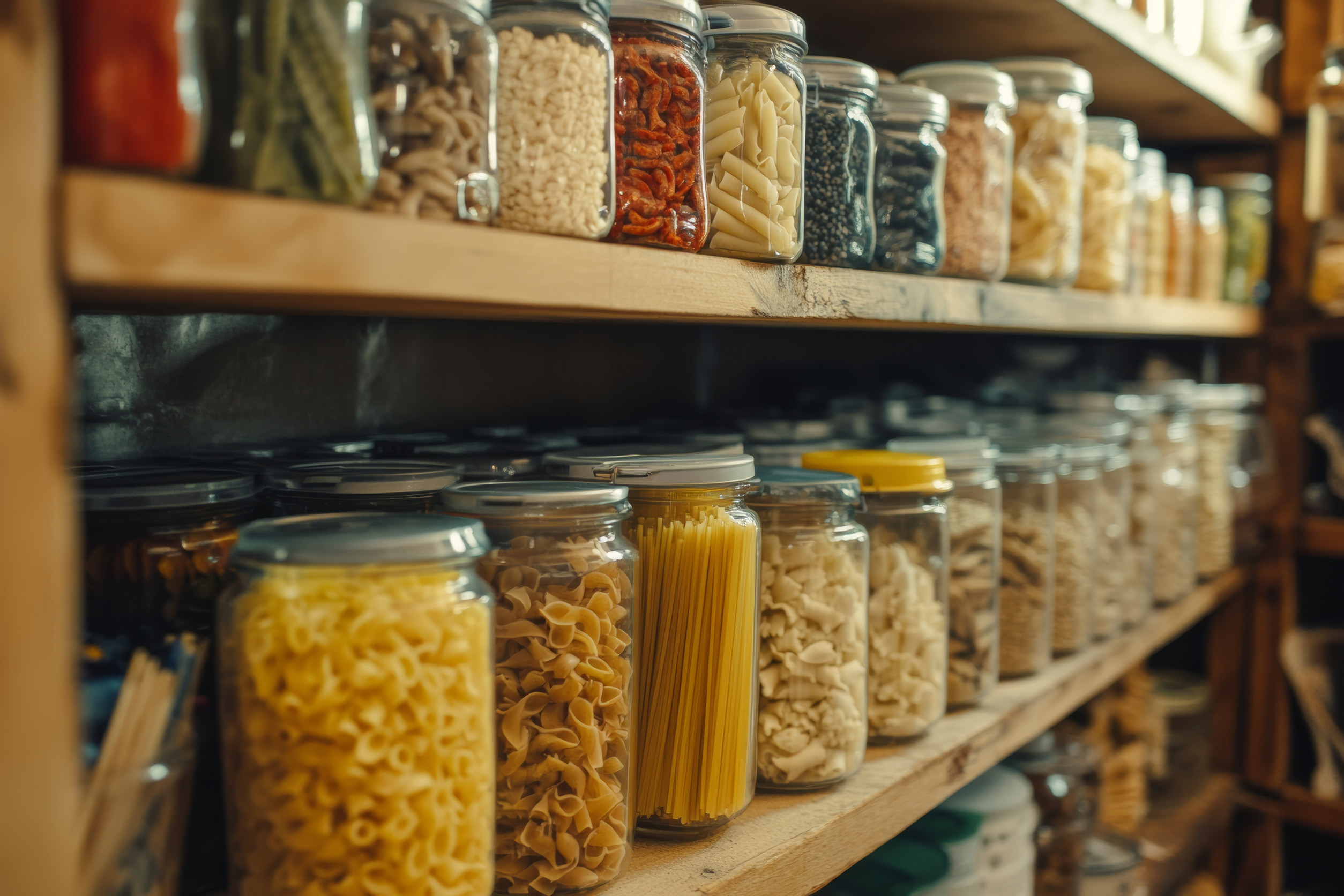
Ever browse your pantry only to find a forgotten bag of grains or stale crackers? Some everyday items lose quality faster than you think—thanks to quietly shortened shelf lives behind the scenes. In this article, we explore 8 common pantry items with quietly shortened shelf lives and learn why they may not stay fresh as long as you think. You’ll walk away with practical ways to spot age, optimize storage, and avoid disappointment. Stay ahead of stale food and make your kitchen count.
1. Whole Wheat Flour and Brown Rice
Whole wheat flour and brown rice spoil faster because their oily bran components oxidize quickly. Unlike white flour or polished rice, which can last years, whole-grain versions typically stay fresh only three months at room temperature or up to a year if refrigerated or frozen. This quietly shortened shelf life often surprises shoppers who don’t realize oil-rich grains degrade faster. Storing them in airtight containers in the fridge can significantly extend shelf life. Otherwise, expect off-flavors and nutrient loss after just a few months.
2. Nuts and Seeds
Nuts and seeds are pantry powerhouses—but they also contain lots of oil, which turns rancid quickly. Most nuts last only about six months at room temperature, with certain types like pistachios lasting closer to three months. Freezing extends life up to a year or more, but many consumers skip that step. These quietly shortened shelf lives mean expiration isn’t just about date codes—they’re about chemical change and flavor loss. So keep nuts chilled or replace them regularly.
3. Ground Spices and Dried Herbs
Ground spices and dried herbs lose potency, aroma, and flavor far faster than many realize. Ground spices generally stay vibrant for only one to two years, while dried herbs might hold up for up to three. After that, your curry powder or oregano will taste flat at best. Professional organizers recommend tossing spices that “smell flat,” even within date codes. These quietly shortened shelf lives cost cooking quality—not safety, but flavor suffers.
4. Cooking Oils and Fats
Oils like vegetable oil, olive oil, and shortening degrade over time—developing off odors and rancid flavors. Even unopened bottles often expire within six to twelve months, and opened bottles spoil faster if exposed to heat or light. Although safety isn’t typically at risk, taste and nutritional value suffer. A faint sour smell is a sign it’s past its prime. Store oils in cool, dark spots and use them within the suggested timelines
5. Crackers and Shelf Snacks
Crackers, tortilla chips, and opened bagged snacks absorb moisture from the air, quickly becoming stale and bland. Once opened, many of these snacks lose crispness within weeks. That quietly shortened shelf life means you might be rationing stale crackers without knowing it. To preserve crunch, store them in airtight containers. Otherwise, expect disappointment when the first bite falls flat.
6. Dried Fruit
Most dried fruits last anywhere from four months to a year, depending on type and storage conditions. For example, figs may keep for just three months, while raisins hold up near a year. These quietly shortened shelf lives result from humidity and oxidation—especially in warmer pantries. Beyond quality loss, dried fruit may develop odd off-smells or textures over time. High heat shortens longevity, so keep them cool and use them sooner.
7. Natural Peanut Butter
Natural or preservative-free peanut butter spoils much faster than commercial types. Unopened jars may last several months, but once opened, quality declines sharply—typically within two to three months. That quietly shortened shelf life comes from a lack of stabilizers and exposure to air once you break the seal. You’ll notice oily separation, bitterness, or mold if left too long. Refrigerate after opening and finish within the recommended window.
8. Condiments and Sauces
Many condiments—like mustard, ketchup, salsa, or mayonnaise—have shorter usable lives after opening than dates suggest. Even though manufacturers list quality dates up to a year or more, once opened, they begin deteriorating. Signs include separation, off-color, or changes in texture and odor. Organizers recommend tossing condiments with separation or odor changes regardless of date codes. That reveals quietly shortened shelf lives tied to real-world exposure.
How to Maximize Pantry Freshness
Store whole grains, nuts, seeds, and flours in airtight containers in the fridge or freezer to extend quality. Keep spices in dark, cool locations and replace ground spices every one to two years. Use opened oils quickly or refrigerate to slow rancidity. Consume opened natural peanut butter within two to three months, storing it cold. Finally, toss condiments showing separation or off-odors—even if the date hasn’t passed. With these habits, you’ll counter quietly shortened shelf lives and make your pantry a freshness zone.
Have you ever been surprised by a pantry staple that tasted off before its date? Which items lost freshness too soon for you? Share your experiences or storage tips in the comments!
Read More
5 Things You’re Refrigerating That Should Stay in the Pantry
The Expiration Date Lie: 10 Pantry Items That Outlive Their Labels
The post 8 Common Pantry Items With Quietly Shortened Shelf Lives appeared first on Grocery Coupon Guide.







